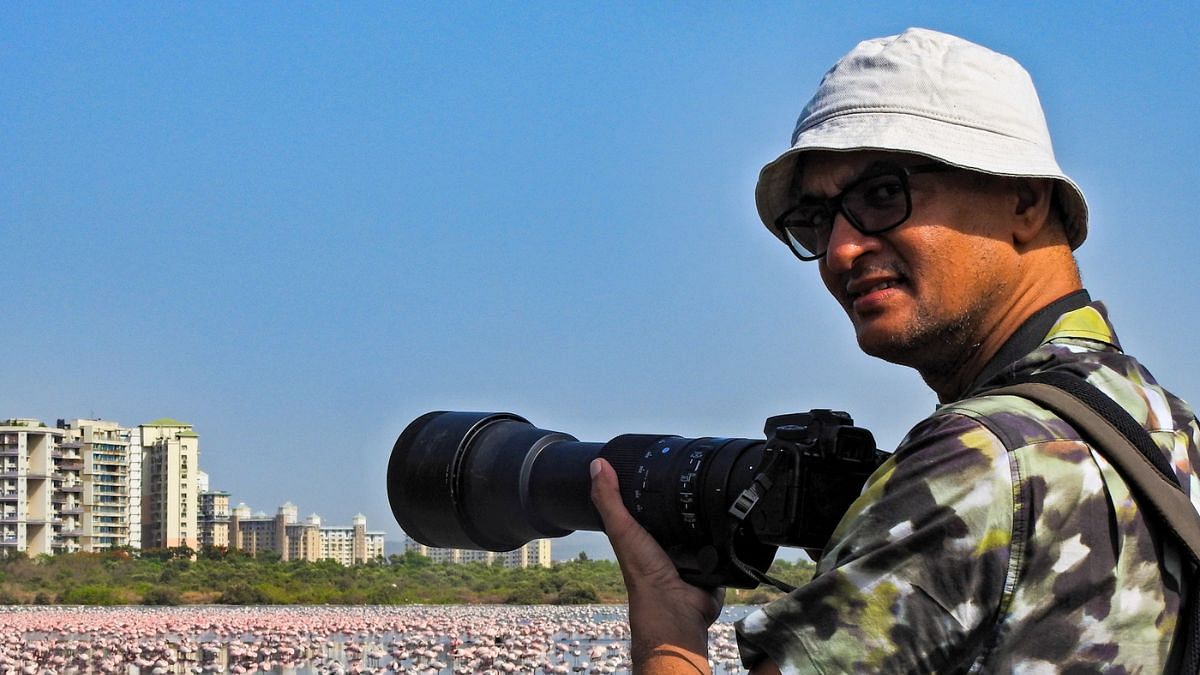[ad_1]

Ravishankar Mantha, CEO, Agrisk Data Analytics |
A professional banker, this 37-year-old has visited migratory birds’ habitats every weekend for seven years, to photograph them, lead guided walks and spread awareness.
Mumbai: When Vidyasagar Hariharan, 37, first visited the lake near Navi Mumbai’s NRI Complex in March 2016, he fell in love. “I reached when it was still dawn, and the sun was about to rise. As the sun rose, I saw around 3,000 pink flamingos dotting the dark water against an orange backdrop,” Hariharan said.
He returned, week after week, visiting similar water bodies in Navi Mumbai and Thane, gathering over the last seven years a vast documentation on flamingos visiting the city, raw material that he views as critical to protecting the bird and its habitat.

Pic Credit: Vidyasagar Hariharan
Pic Credit: Vidyasagar HariharanA banker by profession, Hariharan describes himself as a weekend birder. “I intend to use my pictures for advocacy for these birds,” he said. Over the years, he learnt about their migratory patterns, feeding and mating rituals, and the dangers they face from construction work and pollution of their habitats.
While documenting the flamingos, Hariharan also learnt about Mumbai’s topography, its wetlands and their importance. “Mumbai is the only megapolis that sees migration of such a huge number of flamingos. These birds play an important role in keeping the wetland and mangrove ecosystems running,” he said.

Pic Credit: Vidyasagar Hariharan
In 2019, Hariharan started an Instagram page to post pictures of flamingos in the city, which became a forum for Mumbaikars stuck at home during the pandemic to really consider the bounties of Munbbai’s natural landscapes. Strangers began to reach out, and Hariharan offered to help them do their own bird sightings. He went on to lead walks, help increase awareness and bust myths about the migratory birds. “I use the social media page as an SOS call to draw attention to the human-animal conflict,” he said.
With weather patterns changing and their habitats’ ecosystem degrading, flamingos’ migratory patterns have changed, some of their choice spots taken over for construction. “All these are unique occurrences, which my photography has documented,” he said.

Pic Credit: Vidyasagar Hariharan
Ravishankar Mantha, an industry leader in agri-research and himself a birder, said what Hariharan is doing is different from other birders, for he is interested in the flamingos’ habitat and works towards spreading awareness through talks or lectures, guided walks, etc. “He has also grown to know the local fisherfolk communities around the birding spots, and he speaks to them too about conservation,” Mantha said.
Hariharan’s photos have been published nationally and internationally, which he believes is a progression of his advocacy work. “I click these pictures and put them out so that people see and learn. When the international media uses the images, they become sensat

Pic Credit: Vidyasagar Hariharan
(To receive our E-paper on WhatsApp daily, please click here. To receive it on Telegram, please click here. We permit sharing of the paper’s PDF on WhatsApp and other social media platforms.)
[ad_2]
